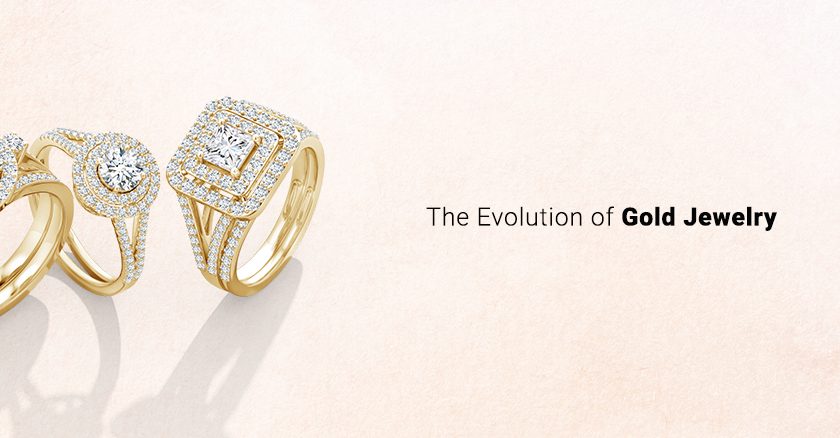Synonymous with luxury, gold is one metal that everyone loves. Its alluring lustre and sophisticated hue infuse elegance into absolutely any accessory, which is one of the reasons that make it extremely sought-after.
Unsurprisingly, gold has been a coveted metal throughout history. Read this article to learn more about its evolution throughout the years.
- Prehistoric Era
- Ancient Cultures
- Mediaeval Ages
- Romanticism
- Art Nouveau Era
- Art Deco Era
- Current Times
Prehistoric Era
According to archeological evidence, gold was first used in 4000 B.C. in a place now known as Eastern Europe. It was primarily used to make decorative objects. Having said that, many historians believe that gold was used even before this particular period.
Ancient Cultures
Over time, different cultures started to incorporate gold into their daily jewellery choices. This was primarily done because of the malleability of the metal.
Egyptians were one of the first civilizations to smelt gold in 3600 BC. The resultant accessories were typically used by the upper class as a sign of their wealth. This precious metal was also buried along with the dead so that they could take their riches into the afterlife.
In Mesopotamia, gold jewellery was used for fashion and status symbols. Some of the common items included multi-strand necklaces, amulets, and anklets. The metal was often sculpted into different shapes like spirals, cones, leaves, and grapes. Filigree, cloisonné, fine granulation, and engravings were also carried out during this time.
It was the Greeks who started making gold wires in 1500 BC. This eventually led to the creation of thinner, more simplistic pieces like high-end bracelets, wreaths and earrings. During this time, jewellery was only worn during outings and was generally used by women to show off their status.
Note: Unlike other civilizations, Roman jewellery featured extremely diverse metalwork and designs due to the influence of their captured territories.
Mediaeval Ages
In mediaeval Europe, gold jewellery, such as amulets, signet rings and broaches were predominately used to signify the high status of the person. They often featured intricate Celtic and Merovingian designs.
During the Byzantine Empire, however, solid gold was swapped out for light gold leaves. And while the jewellery retained its Roman roots, it also incorporated several religious motifs.
The use of gold in jewellery declined greatly after this period and was only revived in the 19th century.
Romanticism
The demand for gold jewellery and metalwork rose exponentially during the 19th century due to ancient excavations and love for mediaeval and Renaissance art. Pieces produced during this time replicated intricate designs that were used by ancient civilizations.
As time went on, however, naturalistic jewellery became popular and these items featured different flower and fruit-inspired metalwork. Later, variations of the style placed more importance on the gemstone used and resigned the metal to a supporting role.
Art Nouveau Era
During this period, artisans expanded the scope of naturalism to encompass the female figure. Gold retook the centre stage and was often coloured with various enameling techniques to give the accessory a more realistic feel. The metal was also used to create other bejeweled motifs such as orchids, vines, peacocks, swans, pansies, irises, dragonflies, snakes, and mythological creatures.
Art Deco Era
Interestingly, white gold was first introduced during this period. It was created as a platinum substitute to combat its rising prices. The light, shimmering hue of the metal was used to highlight the drama that was produced by the gems and the overall design of the piece.
Current Times…
In today’s day and age, gold enjoys a prominent place in the fine jewellery sector. While yellow gold and white gold remain popular choices, many people are now opting for the romantic vibe that’s exuded by rose gold accessories.
As seen throughout this article, gold is an important part of the fine jewellery industry. And with this precious metal in your accessory arsenal, you are sure to wow the crowd.
Also read: Platinum in the jewellery Industry: Everything You Need to Know




























